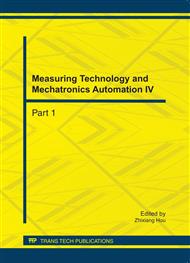p.1250
p.1257
p.1265
p.1269
p.1273
p.1277
p.1281
p.1288
p.1292
The Simulation Analysis of Structure Type Effect on Cutting Process
Abstract:
Based on the plastic-elastic method, the 3-D milling FEM analysis model is established in this paper, which simulates the material removal process. This paper studies the release of initial residual stress how to affect the deformation in different structure parts. Compared with the results of simulation and experiment, it can be drawn a conclusion that the symmetric release of the residual stress facilitates to reduce the machining deformation.
Info:
Periodical:
Pages:
1273-1276
Citation:
Online since:
October 2011
Authors:
Keywords:
Price:
Сopyright:
© 2012 Trans Tech Publications Ltd. All Rights Reserved
Share:
Citation:


